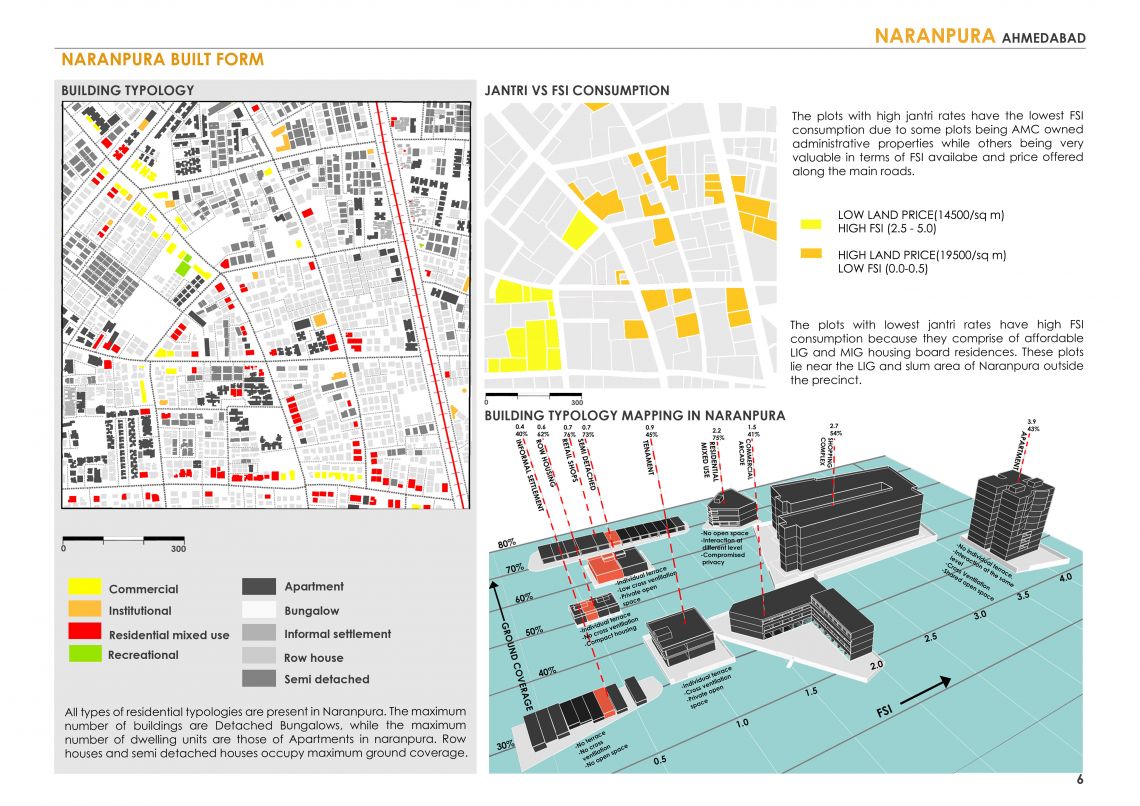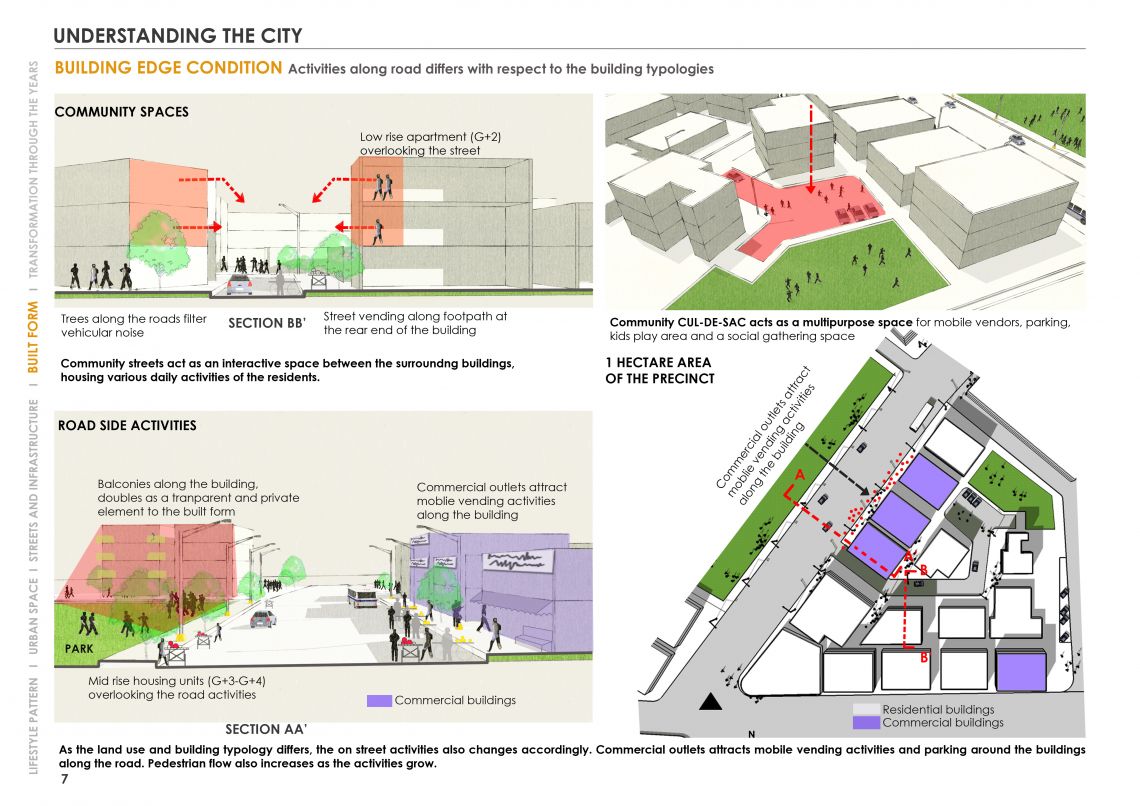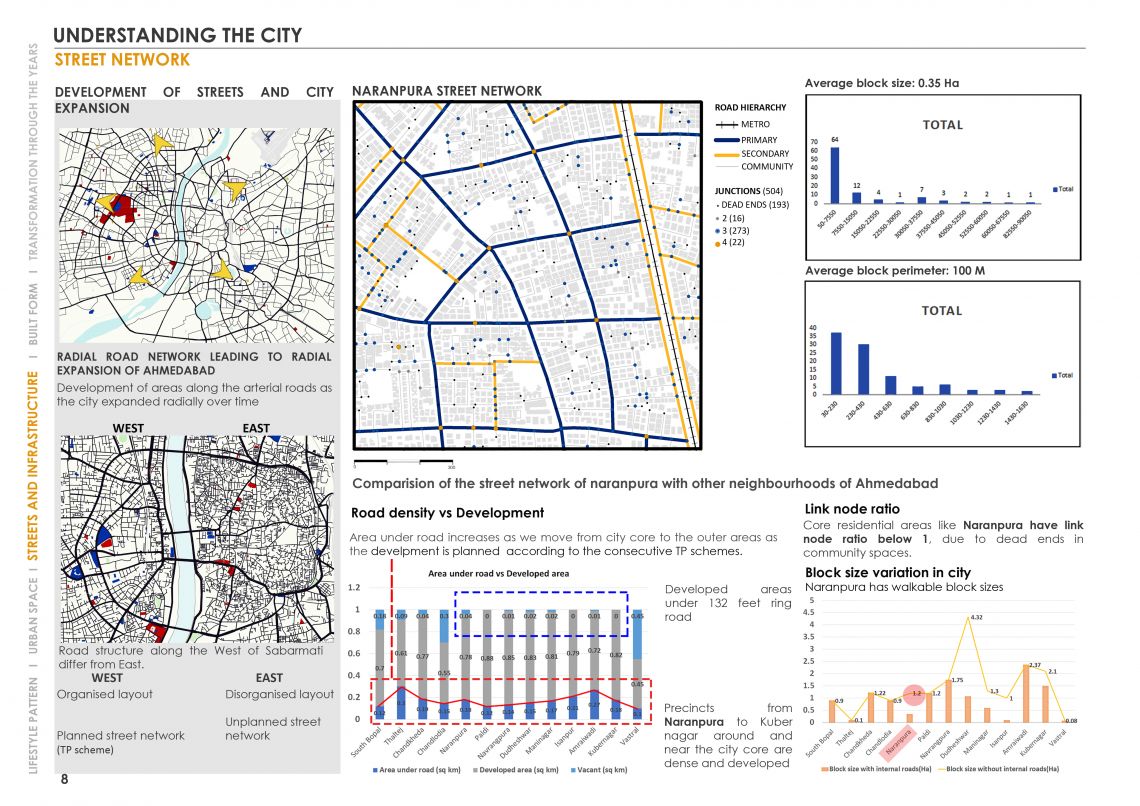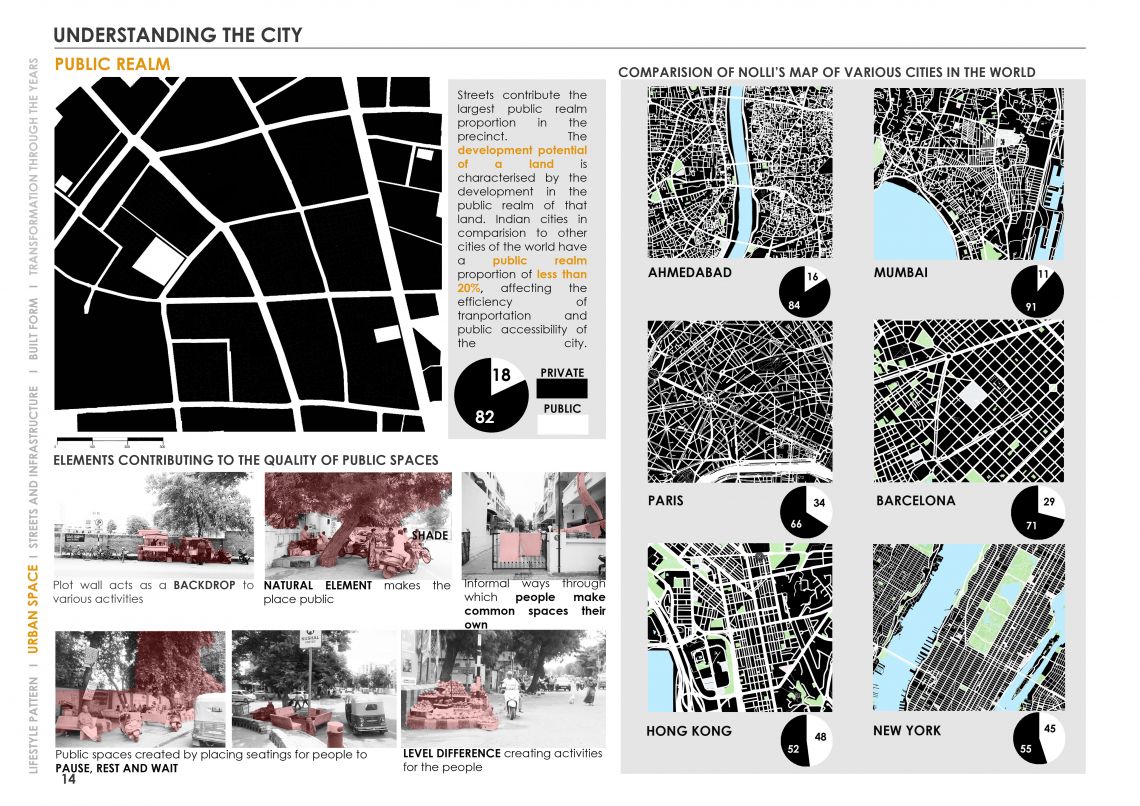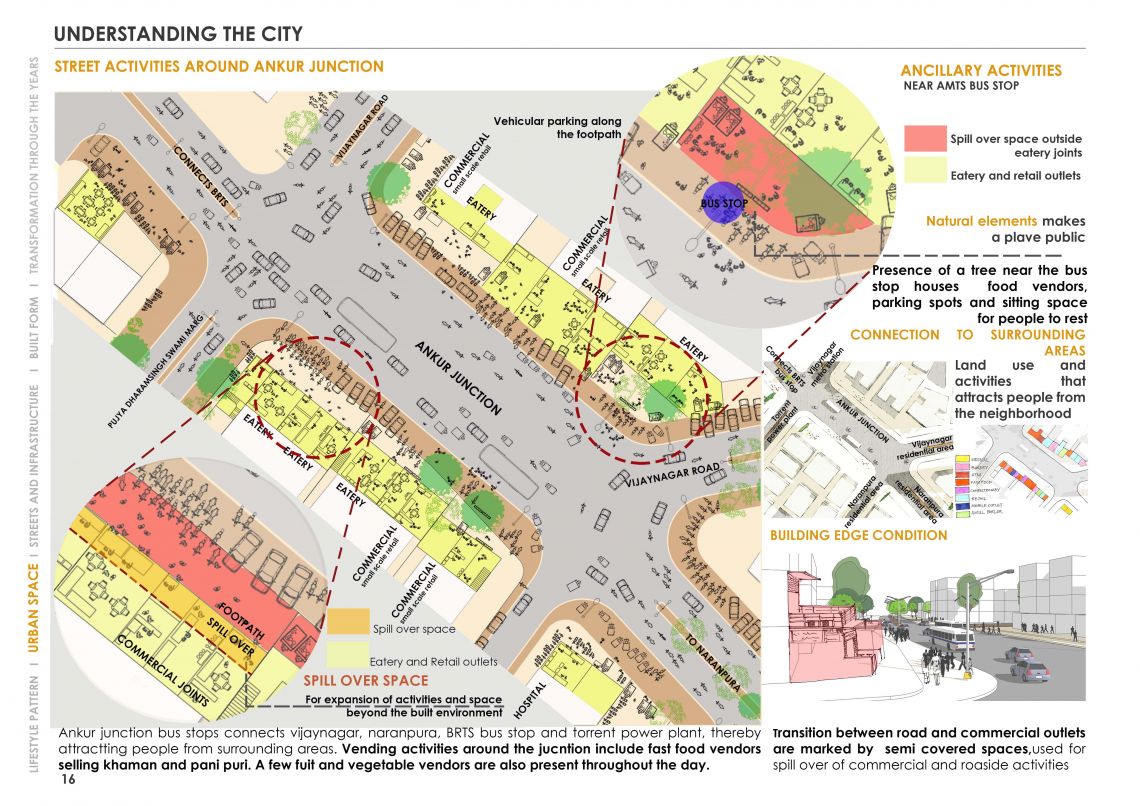Your browser is out-of-date!
For a richer surfing experience on our website, please update your browser. Update my browser now!
For a richer surfing experience on our website, please update your browser. Update my browser now!
“Growth for the sake of growth is the ideology of cancer cell” – Edward Abbey
Interventions in city growth are important for its economic, environmental and social development. Understanding the existing layers of a city plays a vital role to make it more liveable, environmentally sustained and efficient. Ahmedabad is a concentrically developed city. Central Ahmedabad along the river Sabarmati, developed in the early 1900s. As we move radially, the neighbouring areas to the city core and towards the fringes have a more organised pattern of the open and built form. The development of consecutive town planning schemes is a major determinant of the radial development of city streets, along which all the areas have drastically evolved.
Naranpura, a residential neighbourhood in the west of Ahmedabad is named after Naranpura village and started developing in the early 1960s. It is located 3 Kms from CEPT University. People in this area have been residing here for more than 2 generations. With a mix of elegant bungalows, row houses, apartment buildings and organised grid patterned street network, the precinct is a peaceful neighbourhood. The most important task for a city’s growth is to envisage and plan meticulously for future developments in such a manner that it improves the quality of the physical and social urban environment. Naranpura had developed considering the rise in population for the future. The planned approach to the development of this neighbourhood has been beneficial for everyone living in and nearby the community. The study of Naranpura emphasises on the fact that planning for future densities is important for a city’s sustainability and prosperity. The following study on Naranpura shows a peek into the depths of the streets of this neighbourhood and the experience of the place from the perspective of a resident, a visitor and a passer-by. It is a step by step analysis of a planned residential neighbourhood and its development through the years.


